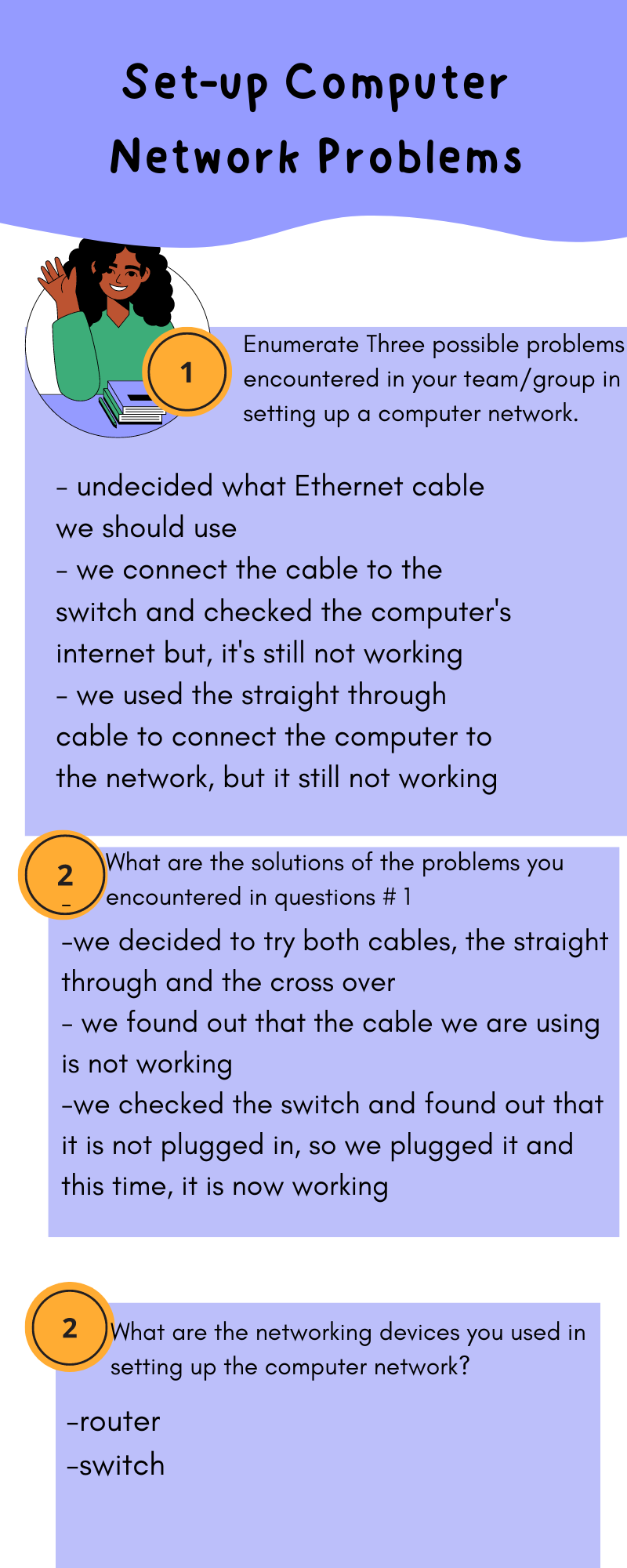PATCH PANEL CONFIGURATION
WHAT ARE THE MATERIALS NEEDED IN PATCH PANEL?
UTP
Unshielded twisted pair (UTP) is a ubiquitous type of copper cabling used in telephone wiring and local area networks (LANs). There are five types of UTP cables -- identified with the prefix CAT, as in category -- each supporting a different amount of bandwidth.A standard UTP cable consists of a 100-ohm copper cable made with 2 – 1800 unshielded twisted pairs shielded by an outer jacket.
RJ-45
A registered jack (RJ) is a standardized physical network interface for connecting telecommunications or data equipment. The physical connectors that registered jacks use are mainly of the modular connector and 50-pin miniature ribbon connector types.
An 8-pin/8-position plug or jack is commonly used to connect computers onto Ethernet-based local area networks (LAN). Two wiring schemes–T568A and T568B–are used to terminate the twisted-pair cable onto the connector interface.
PUNCH DOWN TOOL
Punch down tools are used to terminate wires into punch down patch panels and punch down keystone jacks.The idea is the tool head blade is used to push a wire conductor into a IDC terminal slot (Insulation Displacement Conductor). At a certain set point the mechanism is triggered and an internal spring uses kinetic force to shove the conductor down between the metal prong contacts to make an electrical connection. Oftentimes, the blade will also flush cut the conductor at the end of the process.
KEYSTONE MODULE
CRIMPING TOOL
Crimping is commonly used in electrical work, to attach wires together or wire to other connectors. It is a good helper for you to crimp and terminate RJ45 plugs.
CABLE TESTER
an electronic device that measures the conductive between two ends of a cable. It also checks and measures signal for correct wiring. There are two most common ways of testing the connection: Tester sends a current down the wire and measures its level.
PATCH PANEL
A patch panel is a device or unit featuring a number of jacks, usually of the same or similar type, for the use of connecting and routing circuits for monitoring, interconnecting, and testing circuits in a convenient, flexible manner.
WHAT ARE THE STEPS IN CONFIGURING PATCH PANEL?
STEP 1: Prepare all the materials needed:
PATCH PANEL,
UTP CABLE
RJ45
CRIMPING TOOL
KEYSTONE MODULE
PUNCH DOWN TOOL
CABLE TESTER
STEP 2: Strip your wires using the wire stripper attached on your crimping tool.
STEP 3: Arrange the wires according to its color code and attach the rj-45 and then, crimp it.
STEP 4: Using the punch down tool, attach the wires to the keystone module.
STEP 5: You also need to puch down the wires at the back and the front of the patch panel.
STEP 6: Connect the front cable of the patch panel and the keystone module.
STEP 7: Test it using the cable tester.
USES OF PATCH PANEL NETWORKING
It provides a way to keep large numbers of cables organized, enabling flexible connectivity into network hardware located in a data center or an access or wiring closet. Each of these ports contains a wire that goes to a different location. Patch panels can be quite small, with just a few ports, or very large, with many hundreds of ports. They can also be set up for fiber optic cables, cat5 cables, RJ45 cables, and many others. It connect various IT devices together. They are in many different environments including communications closets, telephone company central offices, and data centers. Understanding the role they play can help to determine if your facility requires a patch panel, and if so, how to set it up.
Each port in a patch panel goes to a different device somewhere in the facility. Each panel bundles all the connections together in order to connect to another network. This is often how a LAN connects to a WAN, or to the Internet. Patch panels are also commonly used in facilities with a lot of telephone lines, in which one mainline is used for all phones.








Comments
Post a Comment